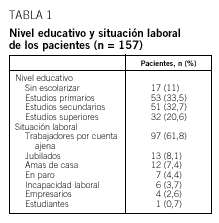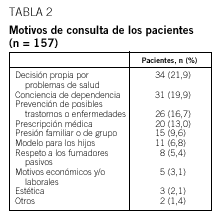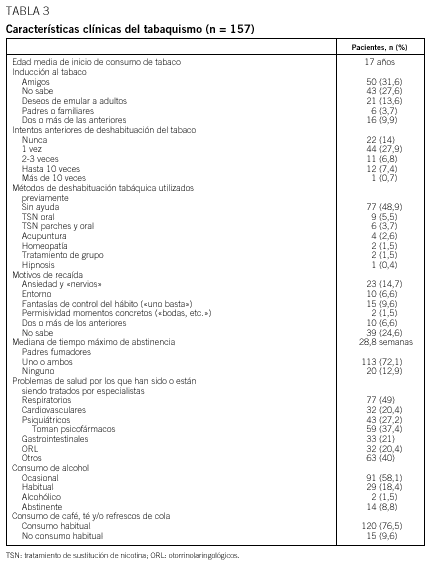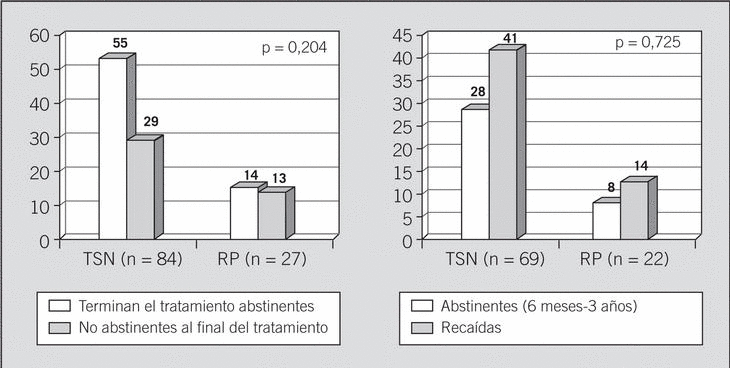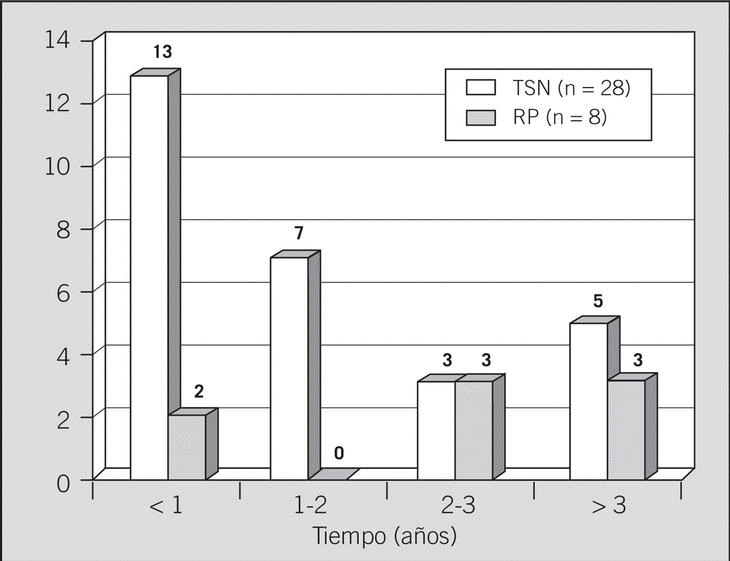Fundamento y objetivo: El objetivo es estudiar si la reducción progresiva del número de cigarrillos sin tratamiento de sustitución de nicotina (TSN) es eficaz para la deshabituación tabáquica en un contexto de tratamiento cognitivo-conductual, en los casos en que no sea aplicable el TSN.
Pacientes y método Se comparan 2 grupos de pacientes con características sociodemográficas, clínicas y grado de dependencia a la nicotina según el test de Fageström similares. Se trata de 111 pacientes tratados para deshabituación tabáquica en la Unidad de Cesación Tabáquica del Hospital Clínic; 84 pacientes realizan tratamiento de deshabituación tabáquica utilizando el enfoque cognitivo-conductual de dicha unidad con apoyo farmacológico de TSN, y 27 realizan el mismo programa con reducción progresiva del número de cigarrillos, sin TSN.
Resultados: A los 6 meses de seguimiento no es significativa la diferencia de tasas de abstinencia/recaída obtenidas con TSN y con reducción progresiva (el 65,3 frente al 51,8%; *2 = 1.612; p = 0,204). Al prolongar el seguimiento hasta los 3 años, sigue sin existir diferencias significativas en el grado de eficacia de ambos procedimientos (un 41% con TSN y un 36% con reducción progresiva; *2 = 0,124; p = 0,725).
Conclusiones: No debiera menospreciarse la eficacia de la reducción progresiva, sin TSN, para la deshabituación tabáquica, particularmente para los pacientes reticentes al apoyo farmacológico o cuando haya contraindicaciones.
Background and objective: The aim was to study the effectiveness of the gradual nicotine withdrawal without nicotine replacement therapy (NRT) as a method of smoking cessation during a three years follow-up period in the cognitive-behavioural context in the clinical work of the Clinic Hospital Unit.
Patients and method: Two groups of patients with similar sociodemographic and clinical characteristics and the same degree of nicotine dependence according to the Fageström test were compared. We included 111 patients treated for smoking cessation in the Unit Hospital: 84 patients, under the cognitive-behavioural model, were treated with NRT and 27 patients, under the same model, were treated only with gradual nicotine withdrawal without NRT.
Results: There was not a significant difference between the effectiveness of the NRT (65.3%) and that of the gradual nicotine withdrawal without the NRT (51.8%) on smoking cessation (*2 = 1.612; p = 0.204) at the first year or during a 3 years follow-up period (NRT: 41% and gradual nicotine withdrawal: 36%; *2: 0.124; p = 0. 725).
Conclusions: The gradual nicotine withdrawal without NRT scheme shows the same degree of effectiveness at the first year and during a three years follow-up period as that of the nicotine replacement therapy scheme on smoking cessation.






